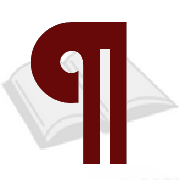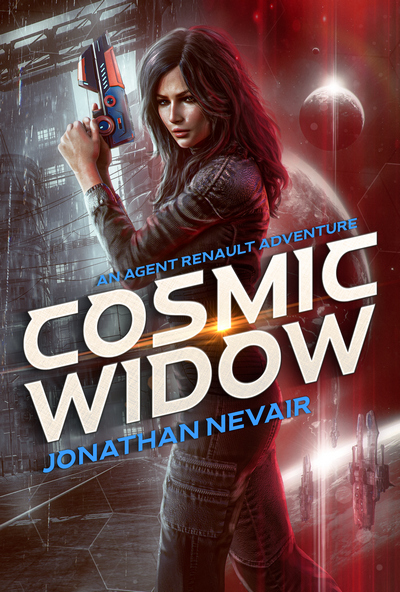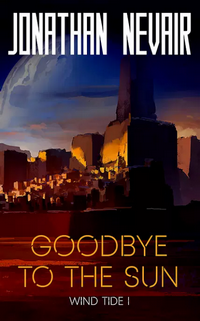
What’s Goodbye to the Sun About?
Several years ago, Keen Draden served as a Legion soldier on Heroon. He left the planet a changed man, a damaged man who found the numbing he needed to get by in a bottle. Now a diplomat, he finds himself on a different planet—one with some parallels to Heroon, however. While in transit on the planet, his transport is attacked and he’s taken hostage by the losing side in a civil war in a truly desperate move.
When this scheme doesn’t work the way they expected, Razor (his captor) comes up with a new plan to get some value from Draden. He sees this as an opportunity to do some good, and achieve some personal goals (the latter are far more important to him than the good). The two leave the planet and begin traveling with Jati, another former Legion soldier—one who isn’t quite as far gone as Draden.
Jati has business that takes him to Heroon, Draden’s personal affairs take him there—and he needs to confront some ghosts from his past, as well; and Razor hopes—almost against hope—that Heroon holds the key for her people’s survival.
Sure, but What’s it Really About?
So that’s the plot—at least the beginning of it—but the novel is ultimately the story of someone (or multiple someones) rebuilding themselves. Not by casting aside the mistakes and tragedies of the past, but by absorbing the lessons learned from calamity, embracing what they meant, and doing when they could to turn the hardships into something for the greater good.
When the novels leans into that, it’s at its best and is the kind of thing I relish and enjoy pressing others to read. I’m not sure it stays that kind of novel long enough to justify enthusiasm, however—but I’ll get into that later.
In addition to that, this book is about family—natural as well as found family. Religion. Power. The obligation of the power to act on behalf of the powerless.
Worldbuilding
This is one of those SFF novels that makes it obvious and plain that there was a lot of detailed worldbuilding done before the book really even started being written (or so it seems). THere’s a complex history behind Draden’s time on Heroon, there are elaborate cultural practices, expansive technology, and layers of political realities and bodies.
You don’t have to read much of the novel to get an idea about the detailed nature of the worldbuilding—and it’s one of those aspects that’s in your face at every step, and you’re still learning about the world as the novel ends—with more that needs understanding. THere’s something very attractive about that.
There’s something maddening about it, too—there are so many, many things I just don’t understand about this fictional world. While I don’t need to have an exhaustive knowledge of everything mentioned in the novel, I also shouldn’t have to shrug my shoulders and move on when I have no idea exactly what’s being talked about and am pretty sure I’ll never get an explanation for it.
For example, I have a very clear and detailed understanding of the dominant culture’s protocols to communicating gender identification when meeting someone by different means (there were frequent mentions of it), but I’m not sure if Draden was actually drinking mercury, or if Quicksilver was a brand name, a category of potent potables, or what. It’s a somewhat unimportant example, but it’s illustrative. (I could’ve used military, political or religious examples there, but this is the most concise and easily explained one).
Antigone
The novel is described as “a space opera inspired by the Greek tragedy, Antigone.” I read the Sophocles play back in High School and in College—I remember it being one of my favorites, and so I was excited to see how Nevair tackled it.
Sadly, it turns out I remember practically nothing about the play, much to my chagrin (I really thought I did), so I can’t comment on how the novel reflects the play. But I thought I’d mention it for those who read this blog and might be interested by the notion.
Plotting and Prose
When an author is painstakingly careful with every word, every phrase in his prose it takes two forms (broadly speaking, at least): the first is that it comes across as fantastically smooth, and feels effortless (think Eames or David). The other form almost seems to boast in the care used, the text beats you over the head with the amount of care exercised in selecting each word (think Jemisen or Rothfuss).
His book seems to fall into the latter category. I, obviously, can’t describe the amount of labor Nevair poured into the text, but it feels like each word in the final version was the result of rewrite after rewrite after rewrite to get it precisely the way that Nevair wanted it. This amount of care draws attention to itself in much the same way as the worldbuilding in this novel does.
Despite the clear labor over the words, it really seems (stress on “seems”) that the same level of planning wasn’t used for the story—it feels like there were multiple novels started in this book, and after a few false starts, the book finally had an arc that it stuck with through to the end. I didn’t get the sense that we’re going to take these two (and eventually three) characters on a journey from A to B via C, D, and E. It felt more like a journey from A to B via C—well, no, maybe D? On second thought, E.
I know that’s not how Nevair actually approached this. It just felt that way to me. I’d also say that story and character took a back seat to the themes Nevair wanted to explore and the worldbuilding. I’m all for expansive worldbuilding and overarching themes, but not at the expense of characters or plot.
So, what did I think about Goodbye to the Sun?
I don’t know. I respect and admire the obvious craft and care seen in these pages, I think most of what he tried to accomplish is well-worth exploring. I just think it could’ve been more effective. I think the care undercut itself.
But I don’t really want to say anything negative about the book because there were so many technical aspects, so much technique displayed, and all of that is commendable and well done. But I can’t bring myself to be entirely positive, either.
In the end, I think I’d encourage people to try it for the experience, but to go into it with the right perspective. And then I’d ask people to come back and talk about it. Maybe you can convince me one way or another.
Disclaimer: I received a copy of this from the author in exchange for my honest opinion.

 Jonathan Nevair is a science fiction writer and educator originally from Long Island, NY. After two decades in the classroom, he finally got up the nerve to write fiction. His character-driven space operas and spy-fi thrillers have been nominated for multiple awards, including the National Fantasy Fan Federation Laureate Award (Stellar Instinct) and the Indie Ink Awards (Wind Tide and Stellar Instinct). Jati’s Wager was a 2022 Indie Ink Awards finalist and runner-up for the category, Writing the Future We Need: Nonbinary Representation. His short fiction is published in sci-fi journals, including Simultaneous Times.
Jonathan Nevair is a science fiction writer and educator originally from Long Island, NY. After two decades in the classroom, he finally got up the nerve to write fiction. His character-driven space operas and spy-fi thrillers have been nominated for multiple awards, including the National Fantasy Fan Federation Laureate Award (Stellar Instinct) and the Indie Ink Awards (Wind Tide and Stellar Instinct). Jati’s Wager was a 2022 Indie Ink Awards finalist and runner-up for the category, Writing the Future We Need: Nonbinary Representation. His short fiction is published in sci-fi journals, including Simultaneous Times.

![]()



